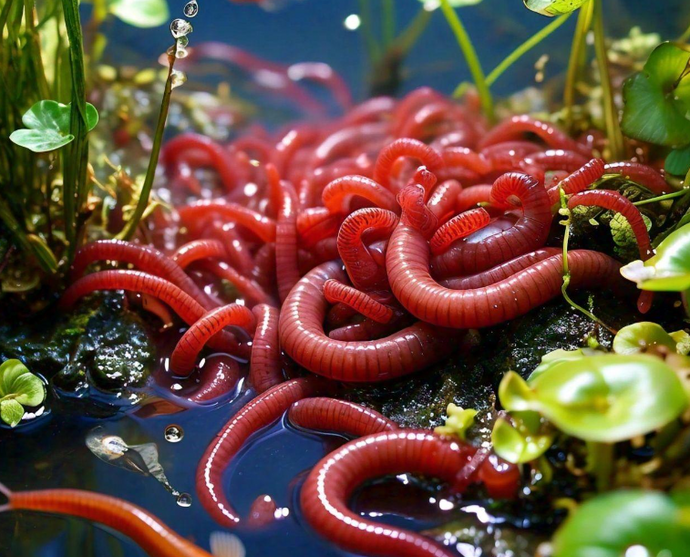Red wigglers: For organic waste solutions
Change Your Garden With Red Wigglers: Advice
By developing a fundamental worm container and recognizing the dietary demands of these remarkable animals, garden enthusiasts can considerably improve soil high quality and plant health. The process of converting natural waste right into abundant, productive castings is both straightforward and fulfilling.

Benefits of Red Wigglers
Red wigglers, medically understood as Eisenia fetida, are usually hailed as nature's composting champions. These impressive worms serve numerous essential advantages that can considerably enhance yard wellness and productivity.

Another noteworthy advantage of red wigglers is their capacity to decrease waste. By composting natural products that would or else add to land fill waste, they play an important duty in lasting horticulture methods. Finally, integrating these worms into your horticulture regimen can result in raised returns, much healthier plants, and a more vibrant yard environment, making them indispensable allies for gardeners looking for to boost their environmental impact.
Establishing a Worm Container
Creating a worm container is an important action for anyone seeking to harness the advantages of red wigglers in their gardening efforts. A suitable worm container can be made from different materials, including plastic containers, wooden pet crates, or commercially readily available worm bins. The first factor to consider is size; a container that goes to least 2 feet wide, 3 feet long, and 1 foot deep is typically suitable for a tiny to medium variety of worms.
It's crucial to produce a bedding layer, making use of materials such as shredded newspaper, cardboard, or coconut coir to provide a comfortable setting for the worms. The bed linens ought to be moist however not soggy, looking like a damp sponge - red worms.
Place the container in a location that preserves a constant temperature level, ideally in between 55 ° F and 77 ° F. Avoid direct sunlight or severe cool, as these conditions can damage the worms. Once the container is established, allow the bed linens to clear up for a few days prior to introducing the red wigglers, ensuring they have a thriving setting in which to prosper.
Feeding Your Red Wigglers
As soon as the worm bin is developed and the red wigglers are introduced, appropriate feeding ends up being key to maintaining a healthy and balanced worm population. Red wigglers prosper on a varied this hyperlink diet regimen, primarily consisting of kitchen area scraps and natural products.
When presenting food, slice the scraps right into smaller pieces to help with quicker consumption. In addition, hide the food underneath a layer of bed linens material to avoid fruit flies and various other problems. Monitor the feeding regularity; a basic guideline is to supply food every 1-2 weeks, depending on the variety of worms and the quantity of food waste generated.

Collecting Worm Castings
How can you inform when it's time to gather worm castings from your container? The readiness of worm castings is indicated by a couple of key indicators.
Another indication is the decrease in worm task; as the spreadings gather, worms often tend to migrate in the direction of fresher food resources. If you discover a decline in worm movement and the existence of spreadings at the end of the container, it's a clear signal that harvesting is due.
To gather, carefully scoop out the spreadings, taking treatment to lessen disturbance to the worms. A popular technique includes separating the castings utilizing light; worms often tend to delve far from the light, enabling you to accumulate the castings a lot more conveniently.
Gathering consistently, around every 3 to six months, guarantees a constant supply of this nutrient-rich amendment for your horticulture endeavors. Bear in mind, the quality of your castings straight influences the wellness of your plants.
Making Use Of Spreadings in Your Garden
(red wiggler fishing worms)Utilizing worm spreadings in your yard can significantly improve soil health and plant growth - red worms. These nutrient-rich natural fertilizers supply essential macro and micronutrients, enhancing the general fertility of your soil. By including worm castings into your garden beds, you can advertise valuable microbial task, which assists in nutrient availability and boosts soil structure
To make use of worm castings properly, mix them right into the leading couple of inches of soil prior to planting. You can create a nutrient-dense liquid fertilizer by soaking worm spreadings in water for a week, then applying the resulting "worm tea" straight to your plants.
Worm spreadings also enhance wetness retention within the soil, reducing the need for constant watering. Their natural pH equilibrium makes them suitable for various plant kinds, from vegetables to ornamentals. Routinely incorporating worm spreadings into your gardening routine can cause durable plant growth, boosted yields, and a total much healthier garden ecosystem. Welcome the benefits of worm spreadings for a growing and lasting yard.
Conclusion
By developing a worm container, offering proper food, and regularly gathering nutrient-rich spreadings, garden enthusiasts can foster a sustainable ecological community. The use of worm castings and "worm tea" better adds to moisture retention and nutrient schedule in the soil.